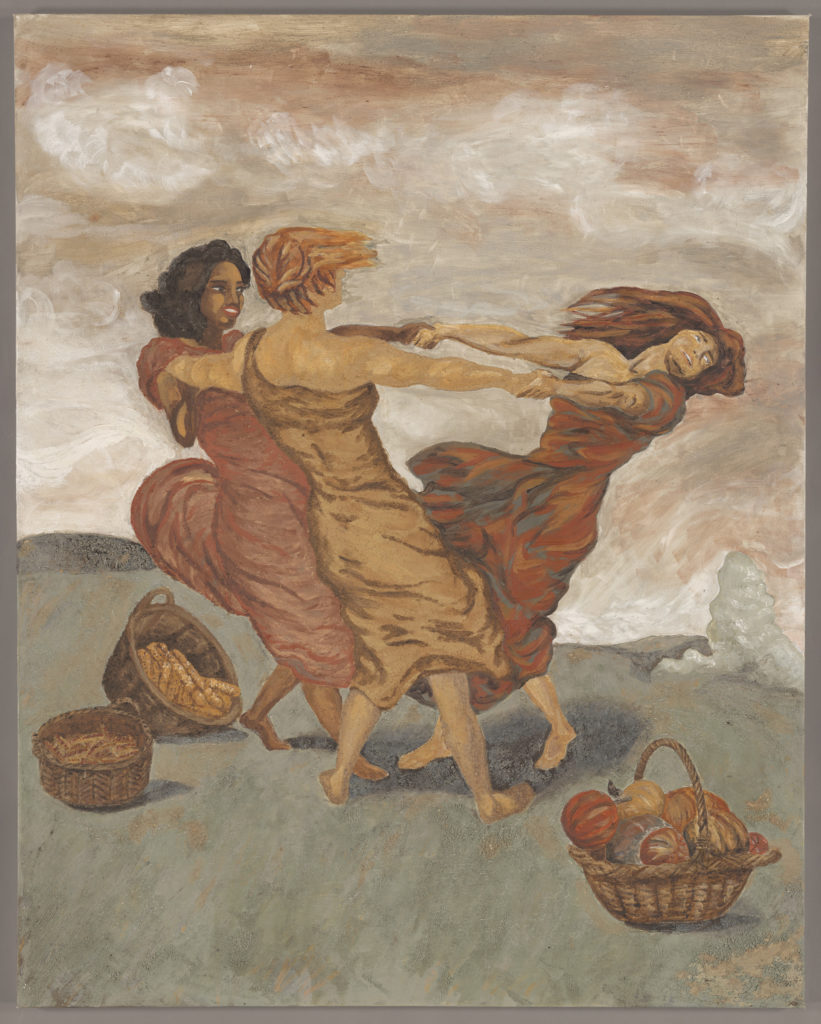Artists for the Earth
The art and science of soil
September 9, 2019
Artists and scientists collaborate to address the issues of climate change and the environment in mutually beneficial ways. Art gains added dimension through science and technology while science becomes relatable on a personal level through art. Now both science and art have come together in what might seem an unlikely place: the Cornell Soil Health Laboratory.
Mixing art and science was a natural progression for Kirsten Kurtz. She grew up on a 200-acre organic farm in western New York, later worked in the vineyards of the Finger Lakes region and eventually co-owned an organic farm.
But Kurtz is an artist, and finishing her undergraduate degree in fine art while also holding a job as a technician at the Soil Health Lab, she discovered a brilliant way to combine both her passions.
Cornell’s Soil Health Lab is a global leader in assessing soil health. It is the most comprehensive lab in the world, not only performing an average of 50,000 tests a year from soil found in the U.S. to the deserts of Africa, but also setting the standard of soil health. Adopted as models around the world, its analyses take a holistic approach, measuring soil for its many qualities, not just its chemical components.
Kurtz’s artistic talent surfaced when she noticed the beauty in the colors of different soils. Experimenting, she found that by mixing soil with water and adding clear gesso as a binder, she could produce paints in a wide range of hues from browns to oranges, yellows, blue (Maryland) and green (French soil from ashes of ancient volcanoes).

In 2015 Kurtz sponsored a soil painting contest at Cornell to celebrate International World Soil Day with the goal of raising awareness about soil health. Teams of artists painted large canvases as well as “community canvases” at the University and local art and music festivals. As a result, in 2017 the Food and Agriculture Organization of the United Nations (FAO-UN) was inspired to initiate a global soil painting contest.
Kurtz’s team won the contest with a soil painting depicting three girls dancing in a circle designed after a painting by Franz von Stuck. Kurtz added three baskets holding corn, beans and winter squash to her painting and titled it “Three Sisters in Soil.”
The name was derived from a type of planting called “three sisters polyculture” used by Native American societies in their traditional organic farming. Combining mutually beneficial companion crops such as these creates a diverse natural ecosystem and improved soil health.
The importance of soil
As a building block for food, fiber, shelter, air and water, soil is an essential natural resource. Soil also stores significant amounts of carbon in a process called ‘soil carbon sequestration’. That process reduces CO2 in the atmosphere and is critical to a climate rapidly warming from increases in greenhouse gases including carbon dioxide.
Less than a decade ago, there was little interest in soil health, but that has changed. Since the beginning of Industrial Agriculture roughly one-third of the Earth’s arable land has been lost. With the extremes of weather brought on by climate change, maintaining the health and strength of soil is vital.
Kurtz now manages the Soil Health Laboratory and is an M.S. student in Cornell’s Department of Natural Resources with a focus on quantifying the health of undisturbed prairie grassland soils and remediation of degraded soils. At the Lab, she especially enjoys working with farmers. Through test results, she can recommend targeted changes to improve their soils such as: cover crops, rotation of crops, tillage practices and composting.
In an interview about her artwork in the Cornell Chronicle in December of 2015, Kurtz said, “This exercise has helped me see soil from not only the scientific point of view, but from the perspective of their unique characteristics and inherent beauty. Soil is not a renewable resource. It takes an incredibly long time to develop and we are losing so much of it to erosion and environmental degradation.”
Tens of thousands of years ago, early man painted the walls of caves using soil or charcoal mixed with water and binders. They left behind their handprints, geometric designs and animal drawings – reflections of themselves and the natural world. Now, with a similar technique, but armed with modern scientific knowledge, Kirsten Kurtz is communicating her world, reminding us of how essential, and beautiful, its basic elements are.

